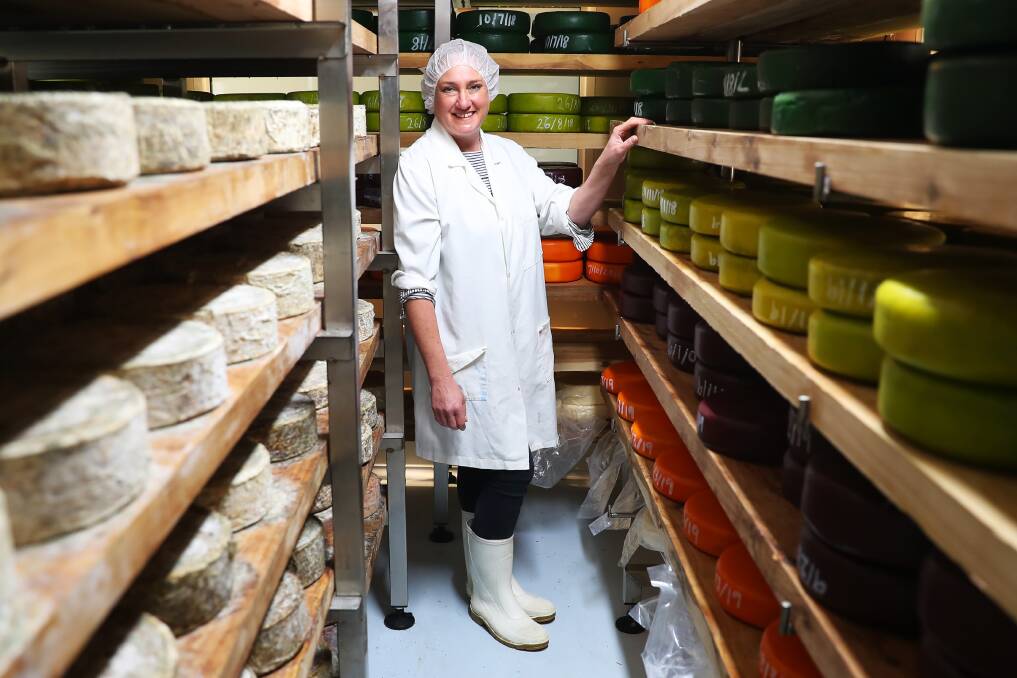A Taste of Credibility: Floridia Cheese Melbourne and Its Workmanship
A Taste of Credibility: Floridia Cheese Melbourne and Its Workmanship
Blog Article
Unlocking the Keys of Artisanal Cheese Making: A Step-by-Step Do It Yourself Guide
In the world of culinary craftsmanship, artisanal cheese making stands as a testimony to the fragile balance between practice and innovation. Each action in the procedure, from selecting the best milk to developing aging techniques, holds within it a riches of expertise gave through generations. As we start this trip to debunk the art of creating charming cheeses, we are encountered with a tapestry of skills and secrets waiting to be untangled. Join us as we discover the intricacies of this ancient craft, where persistence, art, and science assemble to create tastes that entice the detects.
Selecting the Right Milk
When getting started on the journey of artisanal cheese production, the choice of milk plays an important role in figuring out the high quality and characteristics of the last item. The type of milk picked affects the taste, appearance, and overall account of the cheese.
In addition, the source of the milk, whether from cows, goats, sheep, or buffalo, contributes unique tastes and characteristics to the cheese. Each type of milk brings its own subtleties, permitting for a wide range of cheese ranges to be crafted based on the selected milk.
Culturing and Coagulating
To initiate the cheese-making process, the essential steps of culturing and coagulating need to be meticulously executed to change milk into curds and whey. Culturing involves introducing beneficial bacteria to the milk, which then begins the fermentation process. These bacteria transform lactose (milk sugar) right into lactic acid, developing the acidic setting essential for coagulation. The sort of society made use of can dramatically influence the taste, appearance, and ripening of the last cheese product.

The timing and temperature level control during culturing and coagulation are crucial variables that affect the final end result of the cheese. Correct execution of these steps is important to make sure the desired appearance, flavor, and uniformity of the artisanal cheese being produced.
Draining and Pushing Curds
After the milk proteins have actually coagulated and the curds have actually been cut to release whey, the following important step in artisanal cheese making includes draining and pushing the curds to achieve the preferred texture and consistency of the last cheese product. Draining pipes is the process of dividing the curds from the whey. This can be done by moving the curds into a cheesecloth-lined bowl-shaped sieve or mold and enabling the whey to drain pipes off naturally. The moment for draining can vary relying on the type of cheese being made and the wanted moisture material.
Pushing helps expel any remaining whey and compacts the curds to form a solid cheese wheel. Proper draining and pushing are critical actions that dramatically influence the high quality and attributes of the artisanal cheese being created.
Aging and Flavoring Techniques
Executing meticulous aging and flavoring strategies is crucial in boosting the depth and complexity of artisanal cheeses, elevating their preference accounts to splendid levels of refinement and refinement. Aging plays a crucial duty in establishing original site the distinct tastes and appearances that differentiate artisanal cheeses. Throughout the aging procedure, cheeses are kept in thoroughly controlled settings where aspects such as humidity, air movement, and temperature are manipulated to motivate the development of useful mold and mildews and microorganisms. This controlled setting enables the cheese to develop slowly, establishing complex fragrances and rich tastes.
Seasoning techniques likewise add significantly to the final preference of artisanal cheeses. Cheesemakers might choose to introduce added tastes by incorporating components such as natural herbs, spices, and even fruits right into celebrity throughout the production process. Furthermore, some cheeses are cleaned or massaged with numerous liquids, such as brine or alcohol, to improve their appearances and flavors.
Wrapping and Storing Cheeses

Verdict
Finally, grasping the art of artisanal cheese making entails very carefully picking the ideal milk, complying with specific culturing and coagulating procedures, draining and pressing curds properly, and using various aging and flavoring strategies. By following these actions diligently and with interest to information, you Melbourne Made Cheese can create your own tasty and unique cheeses in your home. Bear in mind to cover and store your cheeses appropriately to make certain optimal flavor and appearance growth. Happy cheese making!
Each type of milk brings its own nuances, permitting for a vast array of cheese varieties to be crafted based on the chosen milk.After the milk proteins have actually coagulated and the curds have actually been reduced to launch whey, the following crucial action in artisanal cheese making entails draining pipes and pushing the curds to attain the wanted appearance and uniformity of the final cheese product. Many cheeses ought to be wrapped in wax paper or cheese paper to allow them to take a breath while shielding them from drying out. For cheeses that require to proceed aging, such as bloomy skins or washed rinds, ensure they are saved in a trendy setting like a cheese cavern or a refrigerator set to the appropriate temperature. By paying focus to the covering and storage of artisanal cheeses, cheese makers and fanatics can maintain the stability of these delicacies and fully appreciate their complicated flavors.
Report this page